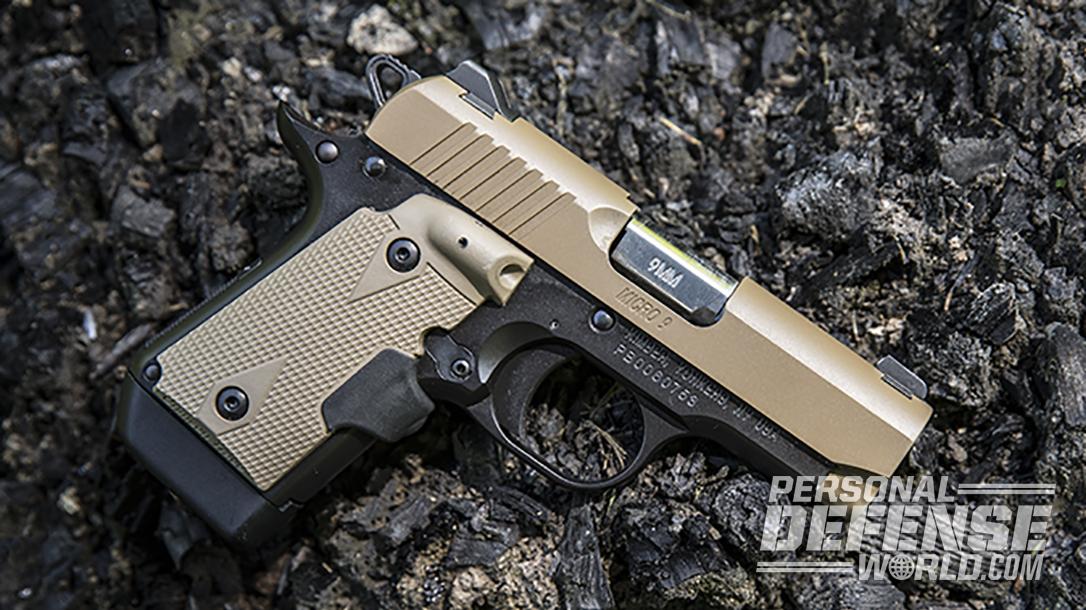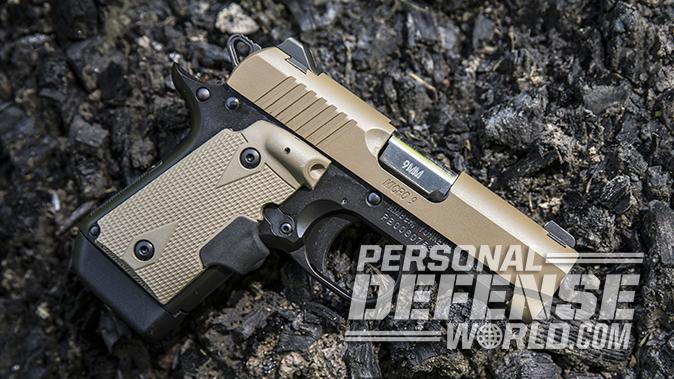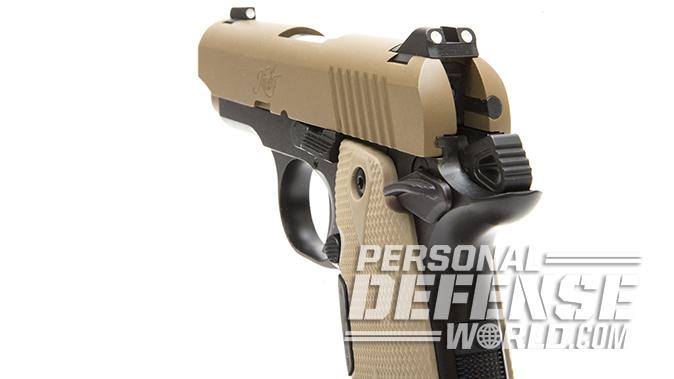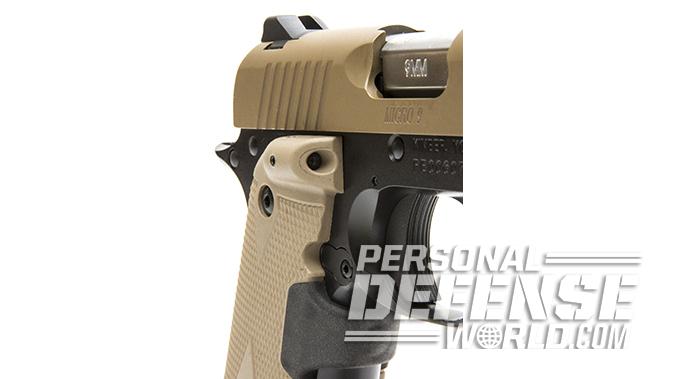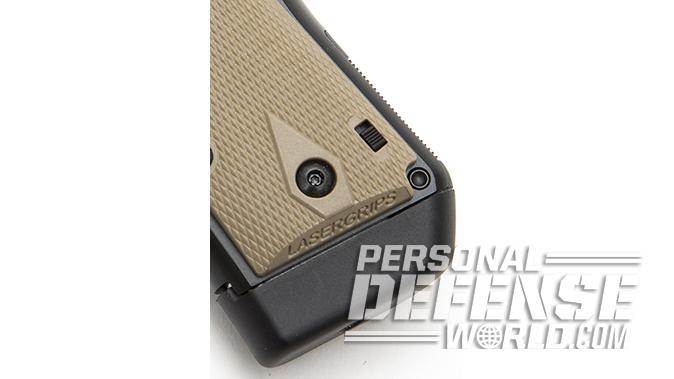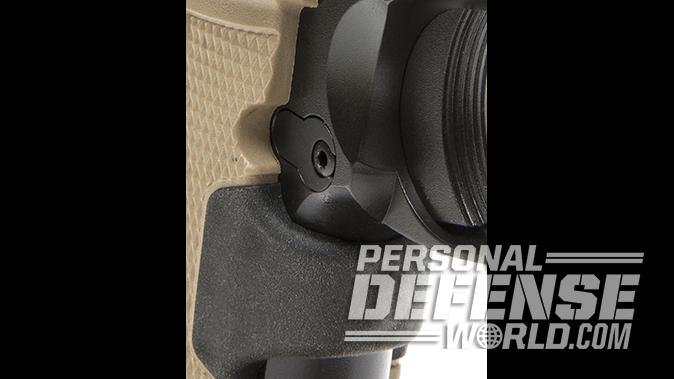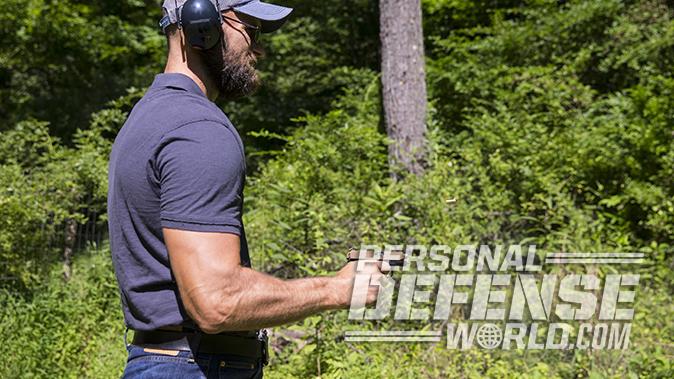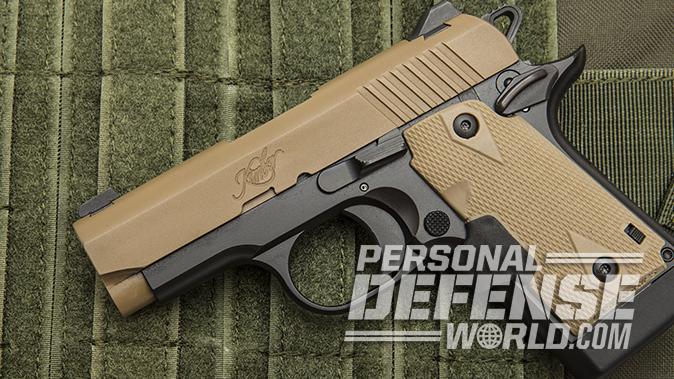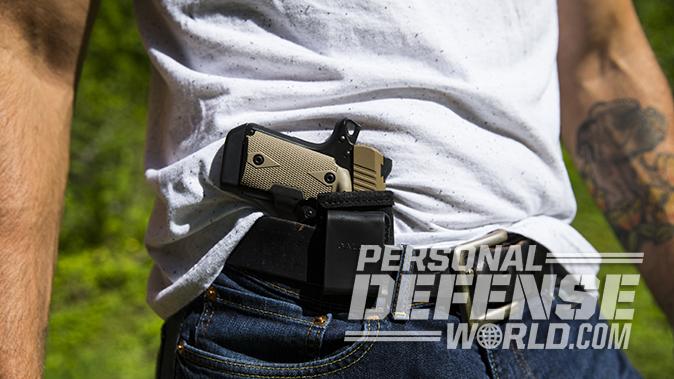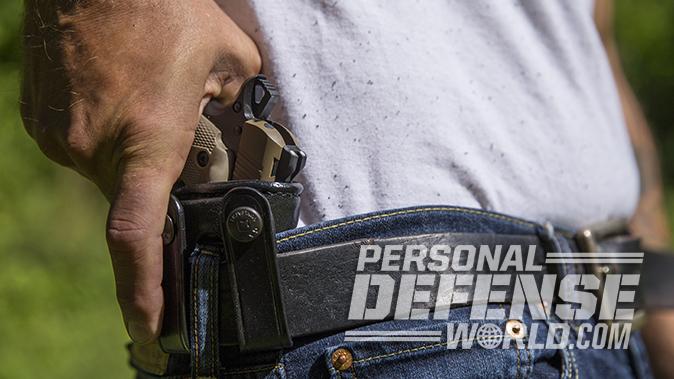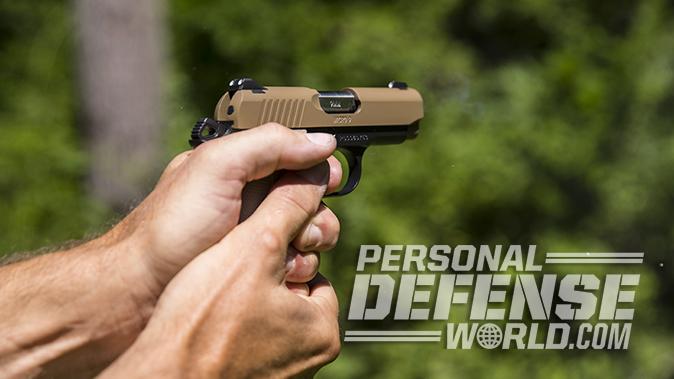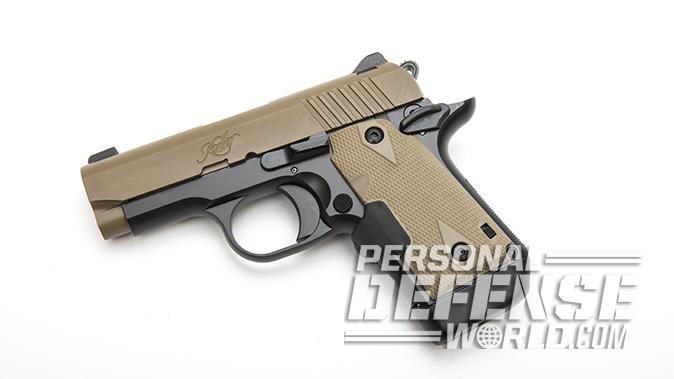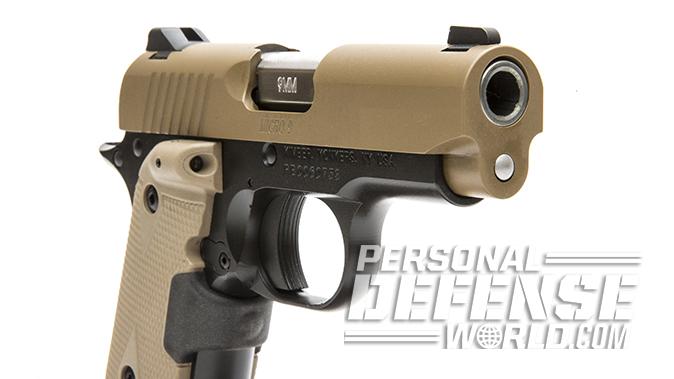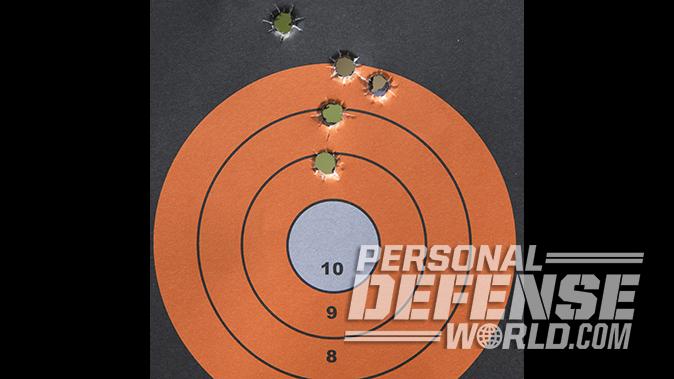There is a wide assortment of pistols of various sizes for concealed carry. Some folks can actually hide a full-sized handgun, but most prefer something along the lines of a compact pistol. Now there is a rapidly growing segment of pocket pistols that offer impressive performance in a subcompact package.
I use the phrase “subcompact” very strictly. Some manufacturers call compact guns “subcompacts” when they really aren’t. While small in stature, they still hover in “compact” territory. My definition of a truly subcompact pistol is one that will easily slip into a pants pocket without significant printing.
Advertisement — Continue Reading Below
Kimber dipped into the fray not too long ago with its Micro line of pistols chambered in .380 ACP. Due to the popularity of the line, it didn’t take long for a 9mm chambering to be introduced. What’s fascinating about this pistol, and others like it, is how much power can be packed into such a small package.
Sure, there were pocket pistols before, but they were chambered in .25, .32 and .380 ACP. Something chambered in 9mm required a larger pistol than what you’d normally associate with pocket carry, and manufacturers didn’t offer as many choices until the last few years. I can think of a few companies that offered subcompact 9mms longer than a few years ago, but they were few and far between.
Advancements in technology and materials have allowed more companies to provide their own similar offerings on a much more prodigious basis. Kimber has embraced the popularity of these types of pistols, and its Micro 9 series of 1911 derivatives is proof.
Advertisement — Continue Reading Below
Micro 1911
Built on a frame measuring just 6.1 inches long and 4.07 inches tall, the Micro 9 uses the time-tested 1911 operating system, sans the standard grip safety. It has a barrel length of 3.15 inches with a frame width of just 1.06 inches, and weighs only 15.6 ounces unloaded. It is sized to be the quintessential 9mm pocket pistol.
The model I received for testing is the Micro 9 Desert Tan (LG). The “LG” stands for Lasergrips, as produced and supplied by Crimson Trace. Another product rising in popularity for compact and subcompact pistols, a laser-aiming device assists the user in getting on target more quickly and helps mitigate any adverse consequences of a shorter sight radius.
The set of Lasergrips supplied is the same desert tan color as the slide of the Micro 9. It is powered by two CR2032 batteries and is adjustable for both windage and elevation. The owner’s manual states that the laser is factory calibrated with the iron sights at 50 feet. The one I received shot a little high with all of the rounds I tried, but it was a simple matter to correct the point of aim using the supplied adjustment tool.
Advertisement — Continue Reading Below
The three-dot sights on this Micro 9 Desert Tan (LG) are excellent for such a small pistol. In fact, they are actually larger than what I’ve seen on some full-sized pistols. This makes picking up the target a much quicker affair, and they assist with improved shot placement as well.
The two-tone appearance of the Desert Tan model makes the pistol quite appealing. The slide has a tan KimPro II finish while the aluminum frame is finished in matte black. All in all, the Kimber Micro 9 Desert Tan (LG) looks good on the surface, but what really counts is under the hood.
Starting The Engine
I got the Micro 9 Desert Tan (LG) off to a roaring start using Sig Sauer’s 124-grain Elite ball ammunition. I’ll be honest here: I thought I would experience a failure or two during the first 100 rounds. That had nothing to do with the company—just my experience shooting various factory 1911s over the years. Surprisingly enough, with both the ball ammunition and the various hollow points I shot for accuracy, there wasn’t a single failure in 200 rounds. Chalk one up for the Micro 9.
Advertisement — Continue Reading Below
The most obvious thing I noted while shooting the Micro 9 Desert Tan (LG) was the trigger pull. It isn’t the 3- to 4-pound pull that you would expect from a standard 1911. The pull on the sample I received averaged 7.7 pounds. That’s a little heavy by my way of thinking, but I would give that a bit of a pass. Considering there is no grip safety on the Micro 9, it only makes sense that a single-action subcompact would have a bit heavier pull just for safety’s sake. That said, I would have preferred a squeeze just under 7 pounds or so. But the trigger didn’t get in the way of shot placement, nor did it pull in the reigns on quick follow-up shots. For close-up social work, you’re not really going to notice the trigger.
Despite its size, the Micro 9 just feels solid in the hand. The thumb safety engaged and disengaged positively. The slide release was easy to manipulate. And the extra length on the extended magazine provided just enough room for all four fingers to rest for a secure hold. These magazines hold seven rounds while the flush-fitting magazine holds six.
Advertisement — Continue Reading Below
While shooting the various test ammo, the Kimber Micro 9 Desert Tan (LG)’s recoil was relatively pleasant considering its size. With standard loads, the pistol could be shot all day with no ill effects. Things started to get spotty when I started shooting +P loads. After draining one magazine full of +P rounds, there was a little buzzing sensation in my hand. Four or five magazines later, the recoil seemed a bit harsh with some chafing on my thumb from the safety.
Of course, that’s to be expected, even in larger handguns. Shooting +P loads isn’t generally recommended for typical range practice. One reason is that extensive shooting of +P rounds can create accelerated wear on the pistol’s parts. Secondly, most people who shoot for recreation don’t necessarily enjoy the recoil from the stout loads.
I’ll qualify this next part with the fact that I own and very much appreciate Crimson Trace’s assorted laser modules. I have quite a few in fact. But I ran into an issue at the range with the Lasergrips. At first I couldn’t see the laser dot, and then it started wavering in intensity. I thought it might have been an issue with the batteries running low. There is a master switch on the left grip panel that keeps the laser off, and there’s a momentary switch on the frontstrap. I figured they must have somehow been engaged. That wasn’t the case.
Advertisement — Continue Reading Below
Since I am right-handed, my index finger was getting in the way of the laser, especially when I had it indexed on the slide when not shooting. If I shot weak-handed, it wasn’t an issue because my index finger wasn’t on the same side as the laser. I found that if I shifted my grip on the pistol a bit with the strong hand, I could see the laser without much of a problem.
It takes some thinking and reminding yourself to do that, and it makes the grip awkward. There wasn’t anything inherently wrong with the laser module. It was just because of the compact size of the pistol. It would be an easy fix to offer either left- or right-handed Lasergrips for this type
of pistol. That would get rid of the issue of the index finger getting in the way. Whether it’s cost efficient or not, I don’t know.
For the accuracy trial, I used Federal’s 124-grain +P HSTs, Sig Sauer’s 147-grain V-Crown JHPs and Federal’s 124-grain Hydra-Shok JHPs. The testing was performed from a standing rest at 7 yards. For the test, I ran through three 5-shot groups with both the iron sights and with the Crimson Trace laser.
Advertisement — Continue Reading Below
The Micro 9 turned out some impressive performance. With the iron sights (shown in the performance table), the Sig and Federal HST loads both tied for the best five-shot group at 1.7 inches. But the Federal Hydra-Shok load got the gold star for the best average group size at just 2 inches.
The story doesn’t end there, however. When I tried for accuracy with the Micro 9’s Lasergrips, the Federal Hydra-Shok load also came out on top for the single best group of 1.4 inches. That’s a slick enhancement to the accuracy numbers. That’s all well and good, but in the end, all of the loads were close enough in accuracy that the only real concern would be performance and weight. So it’d be up to the user to decide what best works for them.
The Checkered Flag
Given what it is—a subcompact 9mm 1911—the Micro 9 Desert Tan (LG) tore through the challenges without a stutter. Its reliability was dead on, as was its accuracy. The trigger pull was a little heavy, but everything else was so good that it was easy to overlook it. Aside from the mechanical aspects, the two-tone Desert Tan model is a sexy-looking package for the tactically inclined.
Advertisement — Continue Reading Below
There are plenty of accessories, holsters and other parts available for it, so it makes sense to pick up a Micro 9 if you’re a 1911 fan. It has the same operating system but hides away a little better. With the advent of more 9mm 1911s on the market, the Micro 9 would be a perfect backup pistol to mate with one for concealed carry.
With the addition of the Crimson Trace Lasergrips, the Micro 9 Desert Tan (LG) becomes an even more capable fighting weapon that might get you out of a jam one day. It is an excellent choice whether you’re looking for a discreet primary carry weapon or a backup to another pistol. The Kimber Micro 9 is a blend of robust performance with attractive aesthetics, and it doesn’t get much better than that.
Kimber Micro 9 Desert Tan (LG) Specs
| Caliber: 9mm |
| Barrel: 3.15 inches |
| OA Length: 6.1 inches |
| Weight: 15.6 ounces (empty) |
| Grips: Crimson Trace Lasergrips |
| Sights: Three-dot |
| Action: SA |
| Finish: Desert Tan KimPro II, black |
| Capacity: 6+1, 7+1 |
| MSRP: $790 |
Kimber Micro 9 Desert Tan (LG) Performance
| Load | Velocity | Accuracy |
|---|---|---|
| Federal 124 HST +P | 1,163 | 1.70 |
| Federal 124 Hydra-Shok JHP | 982 | 1.90 |
| Sig Sauer 147 V-Crown JHP | 872 | 1.70 |
*Bullet weight measured in grains. Velocity measured in fps by chronograph. Accuracy measured in inches for best five-shot groups at 7 yards.
For more information, visit kimberamerica.com.
